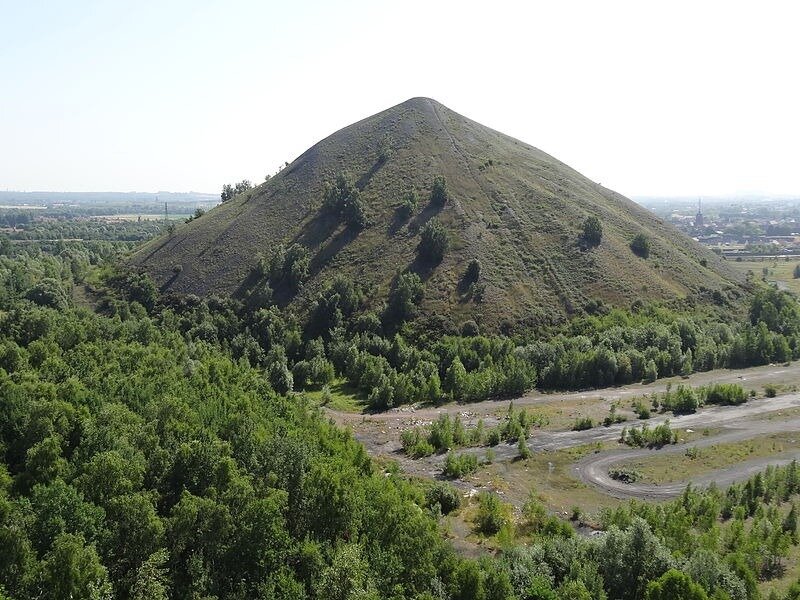Delving into the Detritus of Development

One of the most striking features of many villages in the southern Belgium, and the first thing people see as they ride the train into them, are the massive, cone-shaped black hills that rise up around them and which are frequently the highest points in an otherwise flat landscape. As odd and unnatural looking as these symmetrical dark pyramids are, their proximity to the approaches of the ancient but characteristically grim towns of the region known as Wallonia makes them seem even stranger and begs the question of their origins.
These great mounds are, in fact, slag heaps, some of them centuries old, and a by-product of the iron mining that has taken place in this area at least since it was colonized by Rome some 2,000 years ago, and which reached its peak during the Industrial Revolution. As remarkable as they are to travelers, they are equally commonplace to the locals and seen only as a particular form of trash with no inherent value.
As often as mines have appeared in any number of role-playing game scenarios that I have seen over the years, however, not once has a slag heap or any other significant form of detritus associated with such operations also been noted. Mines generally consist of a timber-reinforced entrance in the side of a hill and to the extent that they are interesting at all it is usually in ways that do not address the significant infrastructure, debris, and other side effects that would in reality be the most obvious hallmarks of such operations.
This is, suffice it to say, a major lapse on the part of storytellers, both because it reveals their lack of understanding about places they have chosen to include in their scenarios, and because the ash and trash associated with such locales can make them interesting and unique from the perspective of adventurers.
Consider the many organic and logical ways mountain-sized heaps of slag — a cinder-like mixture of metallic residue, glassy sand, and anything else left over once iron has been extracted from ore — might be used in a fantasy environment. Perhaps, for example, the slag heaps also serve as barrow mounds that cover the tombs of miners killed in the course of their labors, or even the graves of all people who die in the local area. Or, in the case of areas that are not pacified and which are subject to attack by hostile humanoids, the abundant supplies of slag might be fashioned into walls, towers, and even entire citadels. Such great quantities of material might also attract certain kinds of creature, such as a variety of Rust Monsters that have adapted to deriving nourishment from but which pose a hazard because of their tendency to go after higher quality metals when they are available.
Slag is only one such by product of human, or human-like, endeavor that could be adapted in this way. Consider on a separate track, for example, a city that is noted for the beautiful canals that wend through it but in locations that have traditionally been dry and where all the water flowing in them is wastewater from the surrounding restaurants, hotels, and other businesses. This is, in fact, the case with the world-famous Riverwalk in San Antonio, which is largely built up around man-made canals rather than the San Antonio River itself and through which flows partially-treated gray water.
Possibilities beyond this are almost unending and can be adapted by storytellers not just to make their settings feel more organic and realistic, but also to provide fresh and interesting encounter areas and challenges for the characters adventuring in them.





